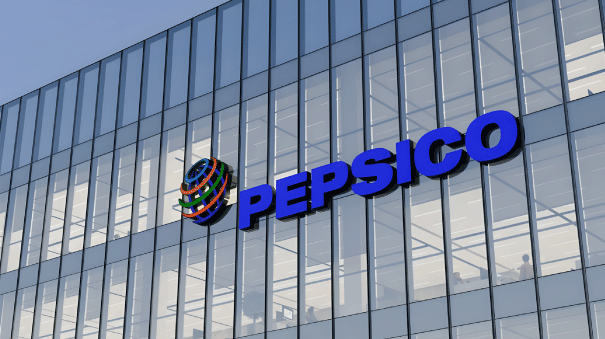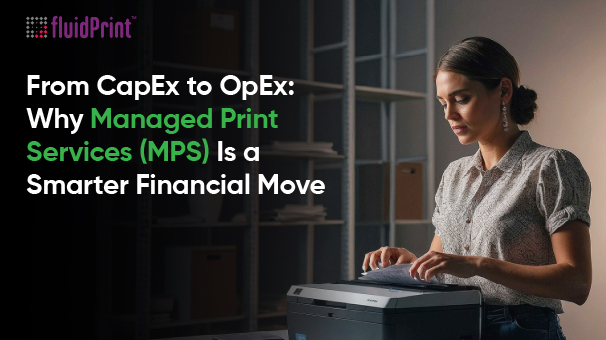Why You Might Be Losing Money on Every Page You Print?
In today’s dynamic business landscape, sustainable growth requires that efficiency and cost control be prioritized. Yet, while factoring in the many aspects of digital transformation for daily operations, the need for business printing is often overlooked.
From BFSI to manufacturing, enterprises continue to manage outdated print setups with high upfront costs, irregular maintenance, and uncontrolled consumables. This results in missing opportunities for print budget optimization while incurring huge hidden costs that steadily erode profitability.
Are you still investing in hardware, handling service downtime, and overstocking toners? You may be clinging to Capex-heavy decisions that restrict flexibility and inflate costs. That’s where Managed Print Services (MPS) save the day—offering a streamlined shift from capital expenditure (Capex) to operational expenditure (Opex), unlocking transparency, scalability, and measurable savings.
Let’s explore how MPS can help optimize business printing costs and transform printing from a cost center into a strategic asset.
Understanding Capex vs. Opex in Business Printing
Before diving into the benefits of Managed Print Services, let’s clarify the financial models at play:
-
- Capex (Capital Expenditure): Large, upfront investments in hardware like multifunction printers (MFPs), which depreciate over time.
- Opex (Operational Expenditure): Recurring service-based payments covering equipment, maintenance, supplies, and support—essentially a ‘print-as-a-service’ model.
By shifting from Capex to Opex, MPS enables businesses to reduce printing costs, gain budget predictability, and align spending with actual usage—all without tying up capital.
7 Ways MPS Drives Managed Print Services Cost Savings
1. Predictable Budgeting & Cost Control
Unlike Capex-heavy models, MPS provides a predictable monthly or quarterly billing structure based on print volumes. This allows for:
– Even distribution of print-related expenses
– More agile financial planning
– Greater control over print operations
This leads to more effective print budget optimization and improved cash flow management.
2. Elimination of Surprise Costs
Service calls, repairs, and emergency toner replacements can be costly. With MPS, proactive monitoring and support are bundled in—eliminating unexpected expenses and downtime.
3. Lower Total Cost of Ownership (TCO)
Organizations often overlook the true cost of unmanaged printing:
– Energy usage
– Device downtime
– Staff intervention
– Inefficient supplies usage
– Compliance risks
MPS reduces TCO by consolidating services and applying intelligent usage policies. This is one of the most direct ways to optimize business printing costs.
4. Scalable, Flexible Infrastructure
As your business evolves, MPS enables:
– Device additions/removals based on actual needs
– Geographic expansion or contraction
– Configuration changes without asset disposal
This Opex model helps organizations move away from rigid hardware ownership and toward print environments that scale with the business.
5. Embedded Security and Compliance
Today’s printers are connected endpoints—and vulnerable. With MPS, features like:
– User authentication
– Secure print release
– Audit trails and encryption
come standard, helping you meet industry regulations (like HIPAA or GDPR) without additional Capex on security tools.
6. Actionable Print Analytics
MPS delivers real-time dashboards that visualize:
– Print usage by team or department
– Environmental metrics
– Toner levels and consumption trends
These insights power cost-saving decisions like default duplex printing or user-level restrictions—strengthening Managed Print Services cost savings through data-backed governance.
7. IT Team Efficiency
Free your IT staff from low-value printer issues. With MPS:
– Device health is remotely monitored
– Toner is auto-replenished
– Updates and diagnostics are handled externally
This lets your IT team focus on core tech initiatives instead of print support.
Case Study: How a BFSI Giant Cut 30% in Print Costs?
A leading BFSI organization with over 70 branches faced:
– Recurring Capex investments every few years
– Inconsistent device performance
– Print-related IT overload
After transitioning to Managed Print Services via an Opex model:
– They standardized their printer fleet
– Switched to cost-per-page billing
– Enabled remote monitoring and auto-supplies
Result?
✅ 30% annual reduction in print costs
✅ 90% drop in IT complaints related to printing
Preparing for the Future: MPS in Hybrid Work Environments
In a distributed workforce setup, Capex models fall short. MPS enables:
– Cloud printing from any location
– Centralized usage tracking
– Usage-based billing regardless of geography
This flexibility supports modern businesses and aligns with a future-ready and fluidic workplace for the modern workforce.
Conclusion: Don’t Just Buy Printers—Buy Results
Managed Print Services are more than a way to outsource print operations—they are a strategic financial tool to:
– Reduce printing costs
– Optimize business printing costs
– Convert Capex to Opex
– Achieve long-term managed print services cost savings
With Wepsol’s fluidPrint solution, you gain:
– Centralized print management
– Predictable operating costs
– Enhanced data security
– Customizable print strategies based on real business needs
Why continue investing in depreciating hardware when you can invest in predictable outcomes?
👉 Start your print optimization journey today — with fluidPrint by Wepsol.

